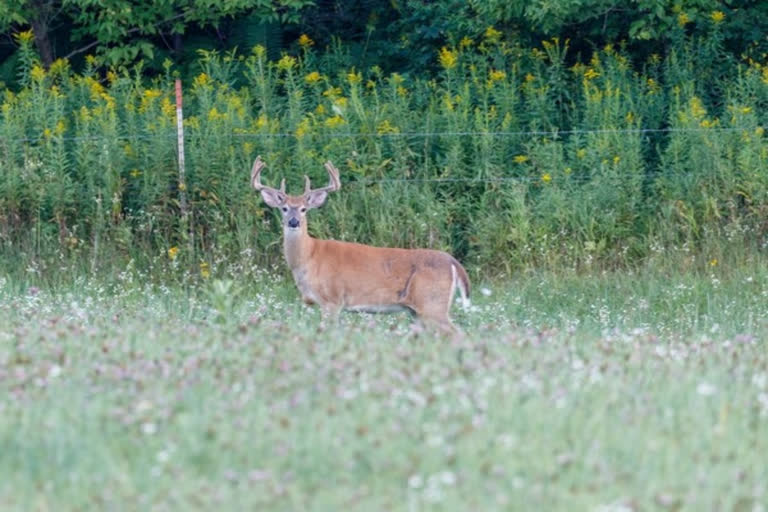Washington: Scientists have found white-tailed deer, the most abundant large mammal in North America, are harbouring SARS-CoV-2 variants that were once widely circulated, but no longer found in humans. The researchers from Cornell University, US, said that whether or not deer could act as long-term reservoirs for these obsolete variants is still unknown, even as they continue to collect and analyze new data.
According to the study, it represented one of the most comprehensive studies to date to assess the prevalence, genetic diversity and evolution of SARS-CoV-2 in white-tailed deer. The study is published in the journal Proceedings of the National Academy of Sciences. "One of the most striking findings of this study was the detection of co-circulation of three variants of concern - alpha, gamma and delta - in this wild animal population," said Diego Diel, associate professor at Cornell.
Over the course of the pandemic, deer have become infected with SARS-CoV-2 through ongoing contact with humans, possibly from hunting, wildlife rehabilitations, feeding of wild animals or through wastewater or water sources, the study said. "A virus that emerged in humans in Asia, most likely after a spillover event from an animal reservoir into humans, apparently, or potentially, has now found a new wildlife reservoir in North America," Diel said. The 5,700 samples used in the study were collected over two years in New York from 2020-22.
Also read: Wastewater surveillance can be used to warn against COVID-19 outbreak, says Study
When the researchers compared the genomic sequences of the variants found in deer with sequences of the same variants taken from humans across New York, they found the viruses had mutated in the deer, suggesting the variants had likely been circulating in deer for many months, the study said.
By the time alpha and gamma variants were detected in deer, for example, there was no evidence of these viral strains still circulating in humans, the study said. "When we did sequence comparisons between those viruses recovered from white-tailed deer with the human sequences, we observed a significant number of mutations across the virus genome," Diel said, adding that some of the viruses had up to 80 mutations compared with the human sequences, providing further evidence that the viruses had likely been circulating in the deer for some time. The mutations suggest the virus has adapted to deer, possibly making it more transmissible between them, the study said.
More study is needed to confirm whether these variants will disappear in deer over time or whether there is risk of SARS-CoV-2 spreading to other wildlife, including predators, the study said. "Because of the evidence obtained in our study, it is very important to continue to monitor the virus in these animal populations to really understand and track changes that could lead or favour spill back into humans and other wildlife," Diel said. There are an estimated 30 million white-tailed deer in the United States. A 2022 study by Diel and others found that across five states surveyed in 2021, SARS-CoV-2 was found in up to 40 per cent of white-tailed deer, the study said. (PTI)



